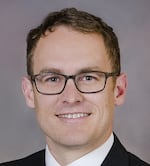Editor’s note: Throughout 2023, OPB is taking a deep look at the biggest social and economic challenges facing Oregon today – their origins, their impacts and possible solutions. This week we are looking at the gaping holes in the state’s mental health system. To conclude this weeklong series, we explore the unique stresses and wider lack of mental health services in rural Oregon.
PROBLEM: People living in rural areas of Oregon have higher rates of depression, anxiety and suicidality.
Oregon’s coastal and rural communities face a heightened version of the state’s mental health care system crisis. Rural communities have higher rates of so-called “deaths of despair,” like overdoses, alcohol related deaths and suicides, than the more urban parts of the state.

People in rural communities have higher incidents of overdoses, alcohol related deaths and suicides, than those living in more urban areas. Suicide risks are particularly high for men working in fishing, farming and ranching industries.
Emily Cureton Cook / OPB
And the risk of suicide is elevated for people, and in particular men, working in some of the industries that are central to rural lives and identities: fisheries, farming and ranching. The impact of suicide in rural communities was the subject of a recent video conversation between Todd Nash, the president of the Oregon Cattlemen’s Association, and Allison Myers, who directs the OSU Extension Family and Community Health Program.
They discussed the isolation and the unique economic stressors people live with in rural Oregon.
“When you combine the economic environment with how challenging it is to earn a living producing food, it’s stressful,” said Myers. “You have this combination where folks are feeling alone, or where it’s not OK to talk about the stuff underneath.”

Bill Minnix of La Pine has had regular mental health support following a suicide attempt in October 2013. Minnix says a big challenge for veterans, including himself, "will see a therapist for a year then the therapist moves on and us survivors must relive our trauma over and over. This has happened to me six times in the last four years and right now I don't have a therapist."
Bradley W. Parks / OPB
Rural communities also have even more limited behavioral health providers and treatment options, and longer waitlists, than Oregonians living in the Portland-Salem-Eugene corridor.
And some services, like psychiatric care for children, are virtually non-existent outside the Portland metro area.

Dr. Beech Burns, a pediatric emergency medicine specialist at OHSU.
Courtesy of Oregon Health & Science University
In testimony this week before the state House Committee on Behavioral Health and Health Care, Dr. Beech Burns, a pediatric emergency medicine specialist, described what that lack of services means for families in rural Oregon who have a kid struggling with thoughts of self-harm. Children may end up being transported hundreds of miles away, by ambulance, just to be evaluated at a pediatric emergency department in the Portland metro area. If doctors decide the child doesn’t need to be hospitalized “they are discharged the same day back to their community, with the family left to determine how to arrange transportation home and how they will pay for the ambulance fee and cost of the emergency department visit,” Burns said.
PROMISING STRATEGIES: A first aid mental health course offered through the extension service at Oregon State University could help train people to recognize signs of mental illness and connect them with resources to provide support. And a bill before the state legislatures would create children’s psychiatric units in three hospitals outside of the Portland metro area.
Many of the strategies OPB has explored elsewhere in this series - like the EASA program and new investments in residential care - are being deployed statewide, including in rural areas, but there are also initiatives tailored to the needs of people living in the rural parts of the state.
Oregon State University’s Coast to Forest initiative is taking advantage of its deep reach into rural Oregon to train people in mental health first aid. It’s a short course that helps people learn how to recognize signs and symptoms of mental health distress and how to respond.
The course prepares people to have conversations that may not come naturally, but can be helpful in a crisis. For example, many people fear that if they ask someone if they are considering suicide, it can plant the idea. That’s a myth. But people who are considering suicide are often relieved to find out they can talk to someone about those scary thoughts. Mental health first aid can teach how to ask the question and how to receive the answer.
Oregon State also includes county resource guides in the training.
They’re giving the training to experts who work in rural and coastal communities across the state, including the staff of 4-H, outdoor school program leaders and extension experts working with people in forestry, agriculture and marine sciences.
The idea is that people experiencing a mental health crisis might be more likely to talk to someone they already know and trust rather than reaching out to a professional, particularly in parts of the state where professionals are few and far between.
“People who work in forestry and ag and youth development might have connections that behavioral health professionals don’t,” said Dusti Linnell, an associate professor with Extension Family & Community Health.
Another project seeking to improve mental health care in rural Oregon would build connections between small, rural hospitals that can’t offer much specialty care for mental illnesses and larger hospitals that would share their staff and expertise.
A bill in this legislative session, HB 3126, would pilot this approach by designating three hospitals in three separate parts of the state as “Regional Child Psychiatric Centers.” Each of these hospitals would have a small psychiatric emergency unit for children, overseen by at least one child psychiatrist and a behavioral health clinician. The units would provide 24-7 care and observation for children in crisis, for up to three days at a time.

Dr. Ajit Jetmalani, director of the division of child and adolescent psychiatry at the OHSU School of Medicine, in Portland, Ore., March 7, 2023.
Kristyna Wentz-Graff / OPB
Dr. Ajit Jetmalani, who directs the division of child psychiatry at Oregon Health & Science University and is a consultant to the Oregon Health Authority, helped develop the proposal.
He says the Regional Child Psychiatric Centers would operate in much the same way the state’s regional trauma system does, triaging patients so that children with less intense needs can stay in their community, while those with more complex needs are admitted for specialty care. Jetmalani says the proposal is one of several big system changes, including the rollout of the 988 suicide and mental health crisis helpline, meant to create a more cohesive statewide response for people in crisis.
“People feel like things are completely chaotic and there’s no plan, but there really is a plan,” he said.
Hospitals would work together to decide which should serve as the regional center, and would sign agreements so that when a child in crisis shows up in their emergency department, they could get consultations over video from the team at the regional center.
Proponents of the bill say if the pilot is successful, they’d like to expand it to create seven such centers statewide. And, they say the same strategy could be applied to strengthen emergency psychiatric care for adults in rural Oregon too.
If you or someone you know is suicidal, you can call 988 to connect with a trained listener. To text with a trained helper, text SAVE to 741741. Both services are free, available 24/7, and confidential.
